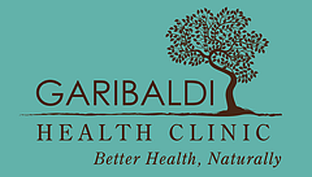Toxic Plastics
Anyone who listens to the radio or reads a newspaper will be aware of the recent flurry of concern about toxins leaching into the human diet from plastic bottles. Given the short attention span of the media, the story was quickly consigned to the dust bin, but the problem hasn’t gone away. In fact, it is much more complex and pervasive than we’ve been led to believe.
The focus of the concern was bisphenol-A (BPA), a chemical that has been shown to disrupt the body’s endocrine (hormone) system and damage reproductive organs. It was found to be leaching from Lexan polycarbonate, a type of plastic widely used for water bottles and baby bottles for infant formula. The latter was of particular concern because heat accelerates the escape of BPA.
Entirely passed over by the media was the much greater danger presented by polyvinyl chloride, or PVC, commonly known simply as vinyl. It not only releases BPA, but a number of other dangerous chemicals as well, including known carcinogens. So why the indifference?
Several reasons: PVC is cheap and easy to manufacture and it is also extremely versatile, used in thousands of products ranging from pipe and construction materials, to food packaging and furniture. With the addition of softeners called phthalates (which leach their own hazardous chemicals), PVC is turned into teethers and soft toys that children chew on.
Just how volatile are these chemicals? Remember that smell inside a new car, or the odour that comes from a new shower curtain when you unfold it? Well, those are chemicals, some of them toxic, escaping in the form of gas.
There has been some limited response to the danger posed by PVCs. IKEA has banned it from its furniture, textiles and wall coverings. The Netherlands and Germany officially discourage (but do not outlaw) its use. However, this is a mere drop in the bucket (which is probably made of PVC) because vinyl is everywhere in our lives. Everywhere, but still possible to avoid where it matters most – in what we eat and drink.
Although the different formulations of plastics probably number in the thousands, those that come into contact with food are grouped in seven recognized types. These are often identified by the numbers 1-7, usually in the center of the recycle ring imprinted on the bottom of plastic containers.
The numbers to be on the lookout for are 3, 6 and 7. Number 3 is a type of PVC used in commercial cling wrap and some soft plastic bottles. While cling wrap may be impossible to avoid (widely used in meat packaging), you can reduce your exposure to the toxins by never leaving it on food you put in the microwave.
Number 6 is polystyrene, used for the foam in meat and bakery trays and, in its hard form, some take-out trays, cutlery and cups. Styrene can leach from the plastic, especially in the presence of heat, and poses a threat of disrupting hormone function and possibly causing cancer, according to the World Health Organization.
Number 7, polycarbonate, is used in five-gallon water bottles, some baby bottles and some metal can linings. It is a potent source of BPA, so much so that the Japanese government ordered a recall of children’s tableware made from this material.
These numbers are at best partial protection for you and your family, as many containers don’t carry them. Compliance is voluntary. It’s time our federal government made this kind of labeling mandatory.
©Dr. Ashely Gordon, 2008.

